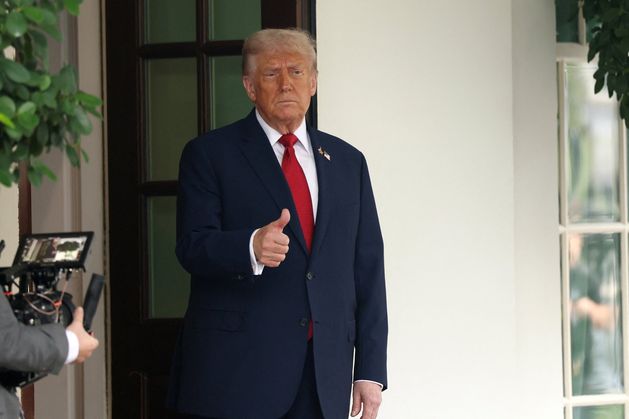Because US President Donald Trump has said that from October 1, next Wednesday, there will be a 100pc tariff on imports of branded or patented pharmaceutical products, unless their manufacturer is building a factory in America.
His post on the social media platform Truth Social said building would be “defined as ‘breaking ground’ and/or ‘under construction’”. You can imagine lawyers having a field day arguing over the precise meaning of that.
Is the distinction he made about “branded or patented” products important?
Yes, because it means the tariffs won’t apply to generic medicines, which account for about 90pc of what’s sold in America. However, US firms producing pharmaceuticals in Ireland for the US market tend to specialise in brand-name drugs, which are high-margin. Generic drugs, with low profit margins, are less likely to be produced here, as an ESRI study published this week pointed out.
But I thought Ireland was covered by the US-EU trade deal, which sets tariffs at 15pc?
It is, and the European Commission quickly pointed out that the Trump administration has previously promised to limit any pharma tariffs to 15pc. The Tanaiste, Simon Harris, said the deal is “absolutely clear” on that point.
However, there was a considerable lack of detail in the announcement on Truth Social. As Louise Kelly of Deloitte Ireland points out, “there is no reference to existing trade agreements in President Trump’s post. So, confirmation from the US that it agrees with the EU position is something we’ll be waiting for.”
Is there a scenario where pharma companies based in Ireland are hit with these new 100pc tariffs?
There is, and it depends on what legal mechanism is used to introduce them. America has been doing a so-called Section 232 investigation into whether the level of pharma imports is a threat to its national security. The outcome of that investigation is awaited, but a tariff regime is expected to ensue.
Alternatively, Trump could again use the International Emergency Economic Powers Act (IEEPA), which was the basis for the reciprocal tariffs he imposed last April.
“If it’s done by way of Section 232, I think that will have an impact for Ireland,” says John O’Loughlin, a partner with PwC. “The EU and Ireland are at risk of that 100pc imposed.
“If it comes under the IEEPA, I would be less concerned. I think the EU position, the 15pc cap, potentially gets honoured. The 100pc would only be imposed on countries sitting outside trade agreements.”
Aren’t a lot of pharma companies building new manufacturing plants in America anyway?
They are. Whether or not they were responding to Trump’s pressure to re-shore manufacturing, big pharma companies such as GSK, AstraZeneca and Johnson & Johnson have all announced this year that they are planning to build factories in America.
Merck is already building one in Delaware, Novo Nordisk in North Carolina, and Eli Lilly has broken ground in Texas.
So that means they’re exempt from this new 100pc tariff, right?
Again, we have to get more detail from the White House as to what, if anything, is planned from October 1.
As John O’Loughlin says, a lot depends on whether Trump looks at this from the point of view of companies or of products. “Some companies have manufacturing in north America for their markets, and in Ireland and Europe for the rest of the world. That’s a common model, but not all pharmaceutical products are manufactured in that way.”
And if a pharma company is building a manufacturing plant in America, does that mean every medicine it makes anywhere in the world is exempt? Or just the medicines it is going to make in America?
The pharma companies must be frazzled by all this uncertainty. Are they ready if a new regime is imposed on Wednesday?
By now, they must be. The threat of a sector-specific tariff has hung over them for months, and even though moving manufacturing from one country to another is a slow and expensive process, there are other workarounds.
“We have done quite a lot of work with them on mitigation strategies,” says Louise Kelly of Deloitte Ireland. “Various reliefs from tariffs can be available. They are looking at valuations, and reliefs such as sale for export, in anticipation of a tariff that may be applied in the future.”
The best option for pharma companies may be to wait Trump out – his second term only has just over three years to run, which is not long in industry terms. “Pharma takes five to six years to move and build a plant,” says John O’Loughlin. “It takes a year or two to move a product through tech transfer.”
Even though the tariff is Trump’s favourite weapon, it makes no economic sense for pharma companies to up-end their manufacturing and distribution models to suit him.

